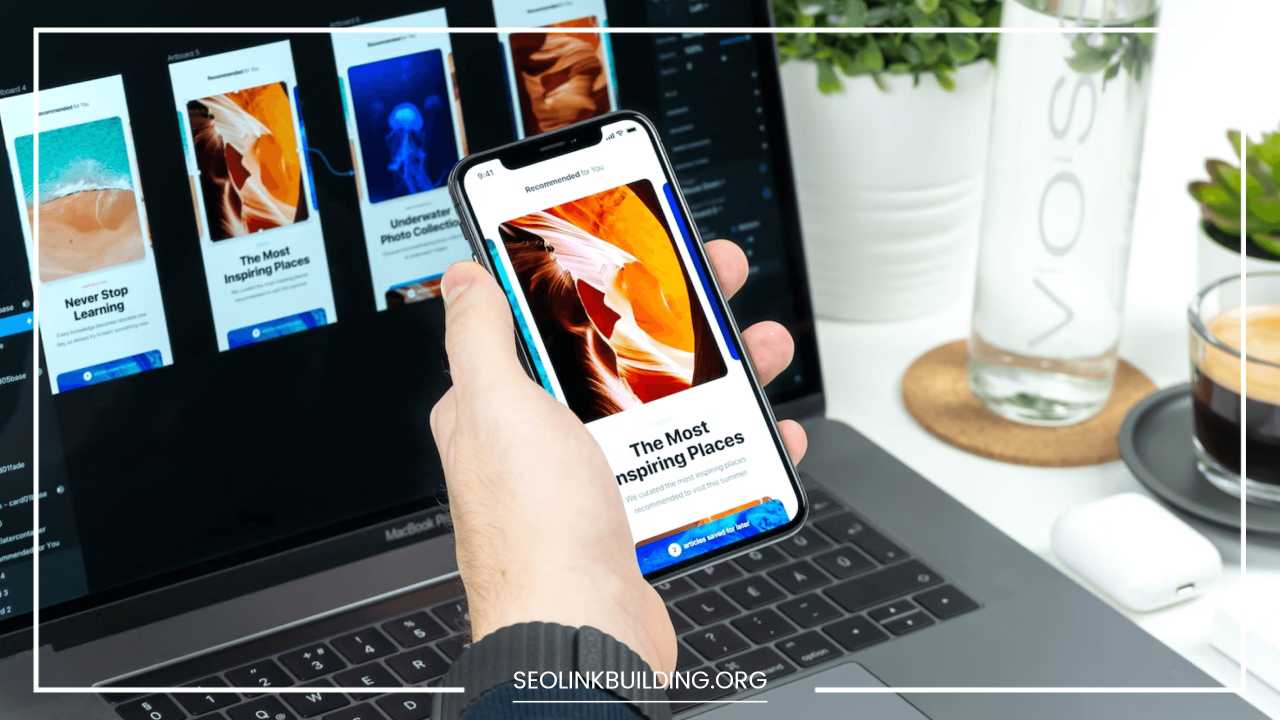UX SEO: The SEO Benefits of User Experience (UX) Design

UX SEO
In the ever-evolving landscape of digital marketing, search engine optimization (SEO) has become a fundamental strategy for businesses looking to establish and expand their online presence.
However, the traditional tactics that once dominated the SEO landscape have evolved significantly. In today’s digital era, user experience (UX) design has emerged as a critical component of SEO success.
This comprehensive article will delve into the intricate relationship between UX design and SEO, emphasizing the substantial benefits of prioritizing user experience in your digital strategy.
The Evolution of SEO
To fully grasp the SEO benefits of UX design, it’s crucial to understand how SEO has evolved over the years. In its infancy, SEO primarily revolved around tactics like keyword stuffing, link farming, and other strategies aimed at gaming search engine algorithms.
However, as search engines like Google grew more sophisticated, they became adept at detecting and penalizing such manipulative practices.
Today, SEO has transitioned from merely appeasing search engine algorithms to adopting a more user-centric approach. The emphasis now lies on delivering value to the end-user.
Google, the dominant search engine, continually updates its algorithms to prioritize websites that offer an excellent user experience. This shift in focus has led to the rise of UX design as a crucial factor in SEO success.
Understanding User Experience (UX) Design
User Experience (UX) design is a multifaceted discipline that focuses on creating websites, applications, and digital interfaces that are intuitive, user-friendly, and enjoyable to use.
It encompasses a wide array of elements, including website layout, navigation, content presentation, load times, mobile responsiveness, and accessibility.
A well-executed UX aims to meet the needs and expectations of users, ensuring they can easily find information and complete desired actions on a website.
The Intersection of UX Design and SEO
The convergence of UX design and SEO occurs when both disciplines align to create a website that not only ranks well on search engines but also provides an exceptional user experience. Let’s delve deeper into how UX design can significantly benefit SEO:
1. Lower Bounce Rates
Bounce rate refers to the percentage of visitors who leave a website shortly after arriving, without engaging further.
High bounce rates can negatively impact SEO rankings, as search engines interpret them as a signal that users didn’t find what they were looking for.
Effective UX design, characterized by clear navigation and engaging content, can reduce bounce rates by keeping visitors on your site longer.
2. Improved Dwell Time
Dwell time is the duration a user spends on a website after clicking through from the search engine results page (SERP). It is considered by many SEO experts as a ranking factor.
When a website provides a positive user experience, visitors are more likely to stay longer, leading to improved dwell time. This, in turn, signals to search engines that your content is valuable and relevant.
3. Enhanced Mobile-Friendliness
With the increasing use of mobile devices, Google has made mobile-friendliness a significant ranking factor.
A mobile-responsive website, which is a fundamental aspect of UX design, ensures that your site is accessible and functional on various screen sizes. This, in turn, helps boost your SEO performance on mobile search results.
4. Faster Page Loading Speeds
Page loading speed is another crucial SEO ranking factor. Slow-loading websites frustrate users and can lead to higher bounce rates.
Effective UX design includes optimizing images, minimizing code, and utilizing content delivery networks (CDNs) to ensure fast page loading times. This optimization enhances user experience and positively impacts SEO rankings.
5. Increased Accessibility
Accessibility is a key element of UX design that benefits not only users with disabilities but also SEO. Search engines reward websites that are accessible to a broad audience.
When your site is accessible, it reaches a wider audience, potentially increasing traffic and engagement, both of which are favorable for SEO.
6. Higher Click-Through Rates (CTR)
A well-designed website with an appealing appearance and user-friendly interface can lead to higher click-through rates on search engine results.
When your site’s listings in the SERPs are more attractive to users, they are more likely to click on them. This increased CTR can improve your SEO rankings, as search engines interpret it as a sign of relevance and quality.
7. Quality Content Presentation
UX design involves organizing and presenting content in a way that is easy to consume. When users can quickly find and understand your content, they are more likely to engage with it.
This leads to better user signals, such as longer time on page and lower bounce rates, which are positive indicators for SEO.
8. Reduced Duplicate Content Issues
Well-designed websites are less likely to encounter duplicate content issues, which can harm SEO rankings. Duplicate content arises when multiple URLs on a site lead to the same or very similar content.
Effective UX design ensures that pages are organized logically, reducing the chances of duplicate content problems.
Implementing UX Design for SEO Success
To harness the SEO benefits of UX design, it’s essential to take actionable steps:
1. User Research
Understanding your target audience’s needs, preferences, and behaviors is paramount. Conduct thorough user research and create user personas to guide your design decisions.
This research helps you align your website with the expectations of your target audience.
2. Mobile Optimization
Ensure that your website is not only responsive but also offers an excellent user experience on smartphones and tablets. Mobile optimization is crucial for SEO, as Google’s mobile-first indexing prioritizes mobile-friendly websites.
3. Page Speed Optimization
Regularly monitor and optimize your website’s page loading speeds. Compress images, leverage browser caching, and use content delivery networks (CDNs) to improve load times. Faster loading pages contribute to a better user experience and higher SEO rankings.
4. Intuitive Navigation
Design an intuitive navigation menu that helps users find what they’re looking for quickly. Use clear labels, a logical hierarchy, and well-organized menus to guide visitors through your website effortlessly. Intuitive navigation reduces frustration and encourages users to explore your site further.
5. Content Quality
Produce high-quality, valuable content that addresses user queries and needs. Use clear headings, bullet points, and multimedia elements to enhance readability.
Engaging content not only attracts visitors but also keeps them on your site longer, positively impacting SEO.
6. Accessibility
Make your website accessible to all users, including those with disabilities. Ensure compliance with WCAG (Web Content Accessibility Guidelines) standards to accommodate a diverse audience. Accessibility not only improves UX but also aligns with search engine goals of inclusivity.
7. A/B Testing
Continuously test and optimize your website through A/B testing to identify areas for improvement in user experience.
A/B testing allows you to refine elements such as page layout, call-to-action buttons, and content presentation based on user behavior and feedback.
8. Monitor Metrics
Regularly monitor SEO metrics such as bounce rate, dwell time, click-through rate, and rankings to assess the impact of UX design changes.
Use tools like Google Analytics and Google Search Console to gain insights into user behavior and adjust your strategies accordingly.
Final Remarks
In the modern digital landscape, SEO success is no longer solely reliant on keyword optimization and backlink building.
User experience (UX) design has become a crucial factor in improving SEO rankings. By creating websites that are user-friendly, fast-loading, accessible, and engaging, businesses can not only satisfy their visitors but also please search engines like Google.
The symbiotic relationship between UX design and SEO is evident in the lower bounce rates, improved dwell time, enhanced mobile-friendliness, faster page loading speeds, increased accessibility, higher click-through rates, quality content presentation, and reduced duplicate content issues.
To remain competitive and relevant in the digital sphere, businesses must prioritize UX design as an integral part of their SEO strategy.
In the end, the key takeaway is clear: when you invest in creating an exceptional user experience, you’re not only pleasing your audience but also boosting your chances of ranking higher in search engine results.
So, embrace UX design as a powerful tool to unlock the full potential of your SEO efforts and watch your online presence soar.
Remember that SEO is no longer just about pleasing algorithms; it’s about satisfying the people who use your website, and UX design is the bridge that connects these two essential aspects of digital success.













